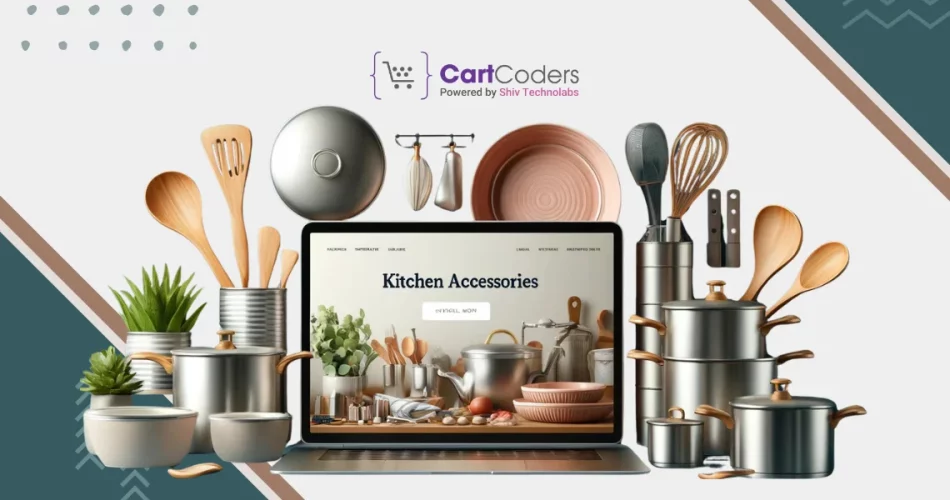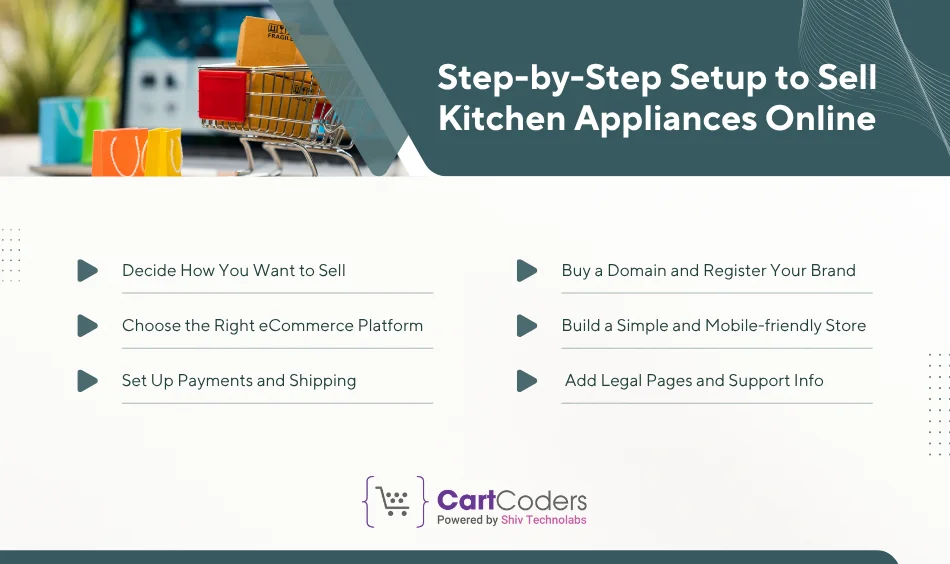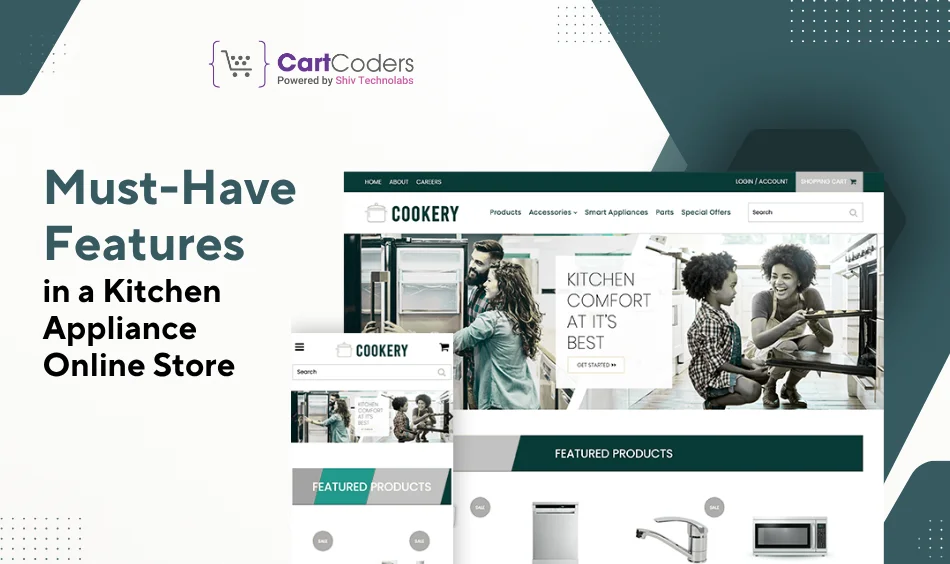Custom Engagement Solutions
Unlock tailored solutions with a free, no-obligation strategy session.
Expert Developers & Engineers on Demand
Scale Your Team with Skilled IT Professionals
Expert Guidance for Digital Transformation

Selling kitchen appliances online isn’t just for big brands anymore. Nowadays, even small businesses and solo sellers are making real sales by setting up their stores. More people now shop for blenders, ovens, and coffee makers from their phones than by walking into a store. They want clear product details, fast delivery, and smooth returns.
But here’s the thing: uploading a few products won’t get you far. If you want people to buy from you and come back again, you need the right setup. That includes smart product pages, simple checkout, and tools that help your store run without stress.
In this guide, we’ll walk you through how to sell kitchen appliances online step by step. Whether you’re just starting or shifting from offline to online, you’ll find everything you need to do it right.
More people now buy kitchen appliances online than ever before. From air fryers to dishwashers, shoppers prefer browsing on their phones, reading reviews, and comparing features before hitting the buy button.
According to Statista, 32.6% of all kitchen appliance sales now happen online.
This rise is driven by convenience, wider choices, and better pricing. Add to that, many buyers now look for EMI options, express delivery, and return policies—things that online stores can offer easily.
For new sellers, this means you don’t need a big showroom. You just need a clean, working online store that gives customers the right details at the right time.
Whether you plan to sell branded appliances or launch your own line, there’s room to grow—if you set things up the right way.

Starting an online appliance store may sound big, but with the right steps, you can get it done without confusion. Here’s how to start selling kitchen appliances online the right way:
Pick a model that fits your budget and goals:
Keep the domain name short, clear, and easy to remember. A .com or .store domain works well. Also, get your brand name registered to avoid future issues.
Some of the top platforms include:
We’ll compare them in detail in the next section.
Keep your site clean and easy to use:
Add trusted payment gateways like Razorpay, Stripe, or PayPal. Make sure you also offer:
Don’t forget:
Having these builds trust and avoids confusion later.
Choosing the right eCommerce platform can save you time and future stress. Whether you’re just starting or already have a small setup, your platform should support products, payments, and delivery integration without needing too much manual work.
Here’s a quick look at the most popular options:
Best for: Sellers who want a clean, easy-to-manage store without coding
Best for: WordPress users who need more control
Best for: Small sellers who want a quick launch
Each platform has its own strengths, depending on your needs, budget, and store size. Below is a quick comparison to help you choose the one that fits best.
| Platform | Ease of Use | Monthly Cost (USD) | Good For | Limitations |
| Shopify | Very Easy | $29 – $299 | DTC stores, brands | Needs paid apps for extras |
| WooCommerce | Medium | $20 – $100 (hosting) | Content + product sites | Requires some setup skills |
| Wix | Easy | $17 – $35 | Small sellers | Not ideal for scaling |
Pick one based on how big your catalog is, how much help you need, and how fast you want to go live.

Your online store should make browsing and buying as simple as possible. These features help buyers decide faster and feel confident in their purchase:
Your product page is where the decision happens. If it’s unclear, slow, or missing key info, buyers will leave — even if your product is great.
Start with a short, clear title that includes the product name and type. For example: “Stainless Steel Electric Kettle – 1.5L, Auto Shut-Off.” Avoid long or fancy names. People search with simple terms.
Next, write a brief description focused on real benefits. Don’t just say what it is — explain how it helps. Instead of saying “500W power,” say “Boils water in under 3 minutes with 500W heating.”
List the key specs clearly: size, weight, power use, warranty, and what’s included in the box. Use bullet points here if needed — this helps people scan fast.
Use high-resolution images from multiple angles. Show it on a kitchen counter if you can. If possible, add a short video showing how the product works — even a 30-second clip makes a difference.
End the page with trust-building content: delivery time, return policy, warranty terms, and real reviews. Also, add a short FAQ answering common buyer doubts, like “Is this dishwasher safe?” or “Does it work on induction stoves?”
The goal is simple: don’t make them guess. Give them everything they need to feel sure before they click “Buy.”
CartCoders builds clean, mobile-ready, and fast-loading Shopify stores made for real shoppers. We set up everything from product filters to payment options, and make sure your store looks right on every screen.
You won’t get a messy setup or confusing layouts. You’ll get a store that’s ready to sell from day one, with all the tools you need.
👉 Schedule a Free Consultation and let’s get your store online the right way.
Selling kitchen appliances online is a real opportunity — but only if you set things up right. It’s not just about listing products. You need a store that’s easy to use, works on mobile, and gives buyers all the details they care about.
Pick the right platform. Keep your product pages simple and helpful. Add smart filters, strong images, and flexible payment options. And don’t skip the basics like warranty info, return policies, and live chat.
Do it with care, and your store can bring in real, steady sales.And if you want to save time and get it done right, Contact CartCoders.
Projects delivered in 15+ industries.
95% retention rate, building lasting partnerships.
Serving clients across 25+ countries.
60+ pros | 10+ years of experience.